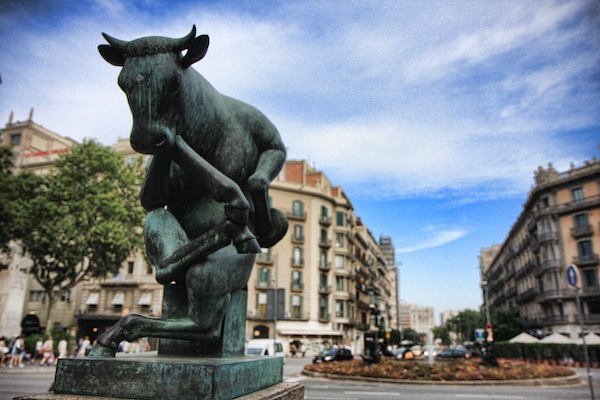This post was written by Apartment Barcelona – an online rental agency with over 700 apartments in and around Barcelona for short and long-term stays.
Are you a chic Born-dweller or an exclusive Eixample urbanite? When planning your trip to Barcelona, one of the biggest issues that you will come across is that of choosing the right neighborhood for your stay. With so many towns in the city, each one offering a distinctive cultural experience, it can often be difficult to decide whether you want a Gothic Quarter adventure or a Barceloneta beach vibe.
Depending on whether you’re looking for a laid-back break, a see-all and do-all travel experience, or a mix of both, choosing the right location for your holiday apartment in Barcelona could mean the difference between a good trip and an incredible one. Take a look at the top five neighborhoods that not only offer a prime location for your stay, but also make it easy to explore all of Barcelona, without any hassle. These areas all have their own unique characteristics which ensure that your trip to Barcelona will be a memorable one.
Barceloneta
Located right on the coast of the Mediterranean, the seaside town of Barceloneta offers holiday-makers astounding sea views, as well as easy access to all of the sights in and around the city. A popular choice with many travelers, this area is perfect for those looking to make the most of the beaches in Barcelona. With plenty in the way of bars, shops and picturesque ports, this area is ideal for relaxing and taking a break from the hustle and bustle of city life. What’s more, the area is home to some of the best seafood restaurants in the city. By choosing a beach apartment in Barcelona, you are sure to make the most of the Mediterranean coast!
The Gothic Quarter
For those who are intrigued by the longstanding history of Barcelona, the Barri Gòtic in the Ciutat Vella district is the ideal neighborhood in which to stay. Situated between El Raval and El Born, the Gothic Quarter is packed full of winding alleyways and picturesque plazas, allowing visitors to catch a glimpse of Barcelona’s rich history, from the ancient Roman walls to the medieval buildings. This area is known as the heart of the city and is also conveniently close to the famous Las Ramblas, as well as home to attractions such as the Plaça Reial and the Barcelona Cathedral.
Gràcia
Want to get lost in a traditional Catalan atmosphere? If so, look no further than Gràcia, a quaint town where you will experience the very best in Catalan culture. The area is home to locally-owned boutiques, charming restaurants, and lovely plazas. Gràcia has a “small town” feel, while still being in close proximity to the very city centre. Here, you will also be able to see the national dance of Catalonia, ‘La Sardana’, at various spots around the town, usually on Sunday mornings. At night, the area comes to life, and the trendy bar scene famously attracts everyone from students to celebrities.
Eixample
Consider yourself a Modernisme fanatic? Well then, Eixample is the perfect district for you. Home to many of Barcelona’s most renowned sights, here visitors can marvel at the towering Sagrada Familia, the colourful Casa Batlló, and the unique La Pedrera, all creations of the famous Catalan architect, Antoni Gaudí. You can also choose to enjoy a glass of wine in one of the many outdoor cafés, shop on the Grand Passeig de Gràcia or dine in some of the best restaurants in the city.
Eixample is split into two neighborhoods (Eixample Esquerra and Eixample Dreta), each one offering plenty of attractions and charm. Renting an apartment in Eixample is the perfect choice for those who are interested in learning more about the life and work of Gaudí, while having some of the best sights in the city right on their doorsteps.
El Born
One of Barcelona’s oldest neighborhoods, El Born, is home to many unique boutiques, museums, restaurants, and bars. Once a site for medieval jousting competitions, this area is now known to be one of the coolest ‘barrios’ in the city and is a hit with young residents. El Born is also home to the famous Picasso Museum, as well as the Santa María del Mar church and the Parc de la Ciutadella. Choosing El Born as the base for your trip ensures a perfect combination of history and modern culture.
So, whether you wish to immerse yourself in Catalan tradition or soak up the Spanish sun on the Mediterranean coast, one thing is for sure, the neighborhoods of Barcelona certainly have something to suit the needs of everyone heading to the Catalan capital!










